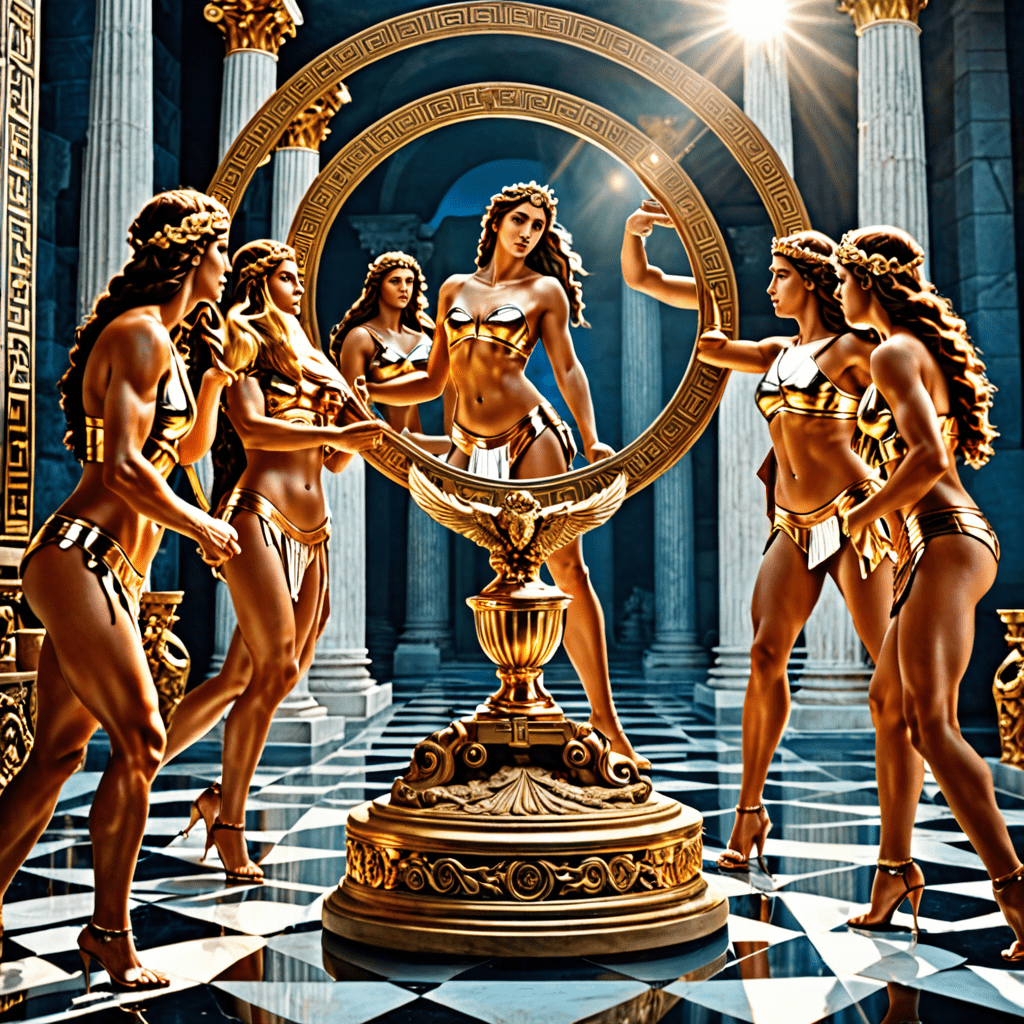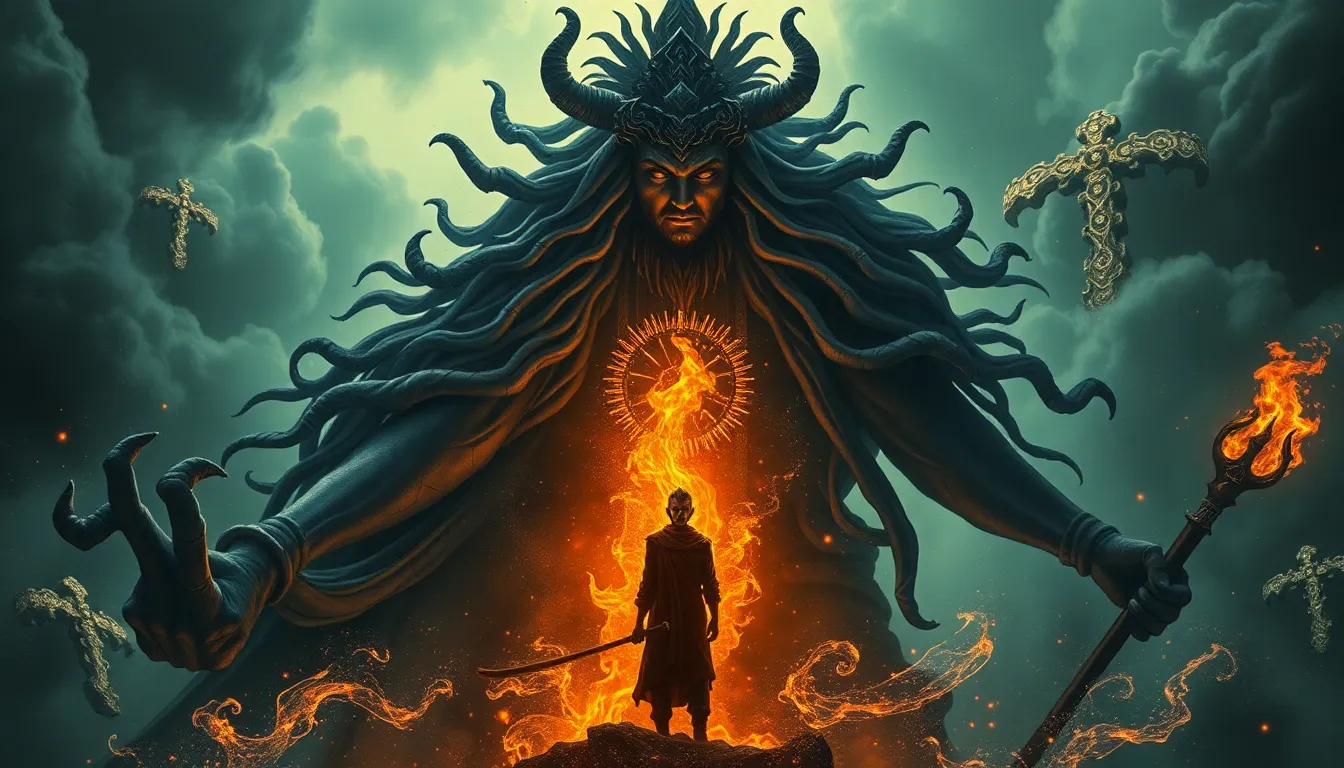Aztec Mythology: The Legend of the Hero Twins’ Victory
The ancient Aztec civilization, known for its complex societal structure and rich cultural heritage, also boasted a vibrant mythology that continues to fascinate and inspire. Among the most compelling stories is the legend of the Hero Twins, Hunahpú and Xbalanqué, a tale that embodies the struggle between good and evil, the triumph of cunning over brute force, and the cyclical nature of creation and renewal.
The Divine Twins: Hunahpú and Xbalanqué
Hunahpú and Xbalanqué were not ordinary twins. They were divine beings, born of the Maize God, who were destined to play a pivotal role in the cosmic order. Their father, the Maize God, was tricked and sacrificed by the Lords of Xibalba, the underworld, a cruel act that set in motion a chain of events leading to the twins' heroic journey. Their mother, the Corn Goddess, was left to mourn the loss of her husband and nurture her sons.
Hunahpú and Xbalanqué grew up to be extraordinary individuals. They possessed uncanny skills, including the ability to play the sacred ball game, a sport that held profound religious significance in Aztec culture. The twins' prowess in the ball game was a reflection of their divine heritage and their connection to the Maize God, who was considered the patron deity of this sport.
The Underworld Challenge: The Lords of Xibalba
The Lords of Xibalba, the rulers of the underworld, were notorious for their cruelty and their relentless pursuit of power. They were jealous of the twins' growing reputation and feared the twins' power to disrupt their dominion. The Lords were cunning and manipulative, using trickery and deceit to lure unsuspecting souls into their domain.
To eliminate the twins and prevent their ascendance, the Lords of Xibalba challenged Hunahpú and Xbalanqué to a game of ball in Xibalba. The game was not merely a contest of skill but a deadly trial, with the stakes set at life and death. The twins, aware of the dangers of Xibalba, decided to confront the challenge, driven by a sense of justice and a desire to avenge their father's death.
The Game of Ball: A Deadly Contest
The ball game was a ritualistic sport that held profound religious significance in Aztec culture. The game was not merely a form of entertainment but a representation of the cosmic struggle between light and darkness, creation and destruction. The ball, which represented the Sun, was to be played through a series of trials, each with its own unique challenges and dangers.
The Lords of Xibalba, eager to claim victory, devised a series of treacherous trials. Hunahpú and Xbalanqué faced perilous obstacles, ranging from deadly traps to supernatural creatures, each designed to test their skills, their courage, and their resilience. The twins, however, were not intimidated. They used their cunning and wit to outsmart their opponents and overcome each challenge they faced.
The Triumph of the Twins: Outsmarting the Lords
Through their ingenuity and their understanding of the game's sacred nature, the twins outsmarted the Lords of Xibalba. They manipulated the rules and used their divine powers to change the course of the game. They defied the Lords' expectations and reversed their fate. The Lords, enraged by the twins' victory, resorted to even more sinister tactics. They attempted to sacrifice the twins, but Hunahpú and Xbalanqué used their divine powers to escape their clutches.
The Twins’ Sacrifice: A Cosmic Renewal
The Hero Twins' victory over the Lords of Xibalba was not the end of their journey. They knew that their triumph was not just about their own survival but about the fate of the world. The twins' victory represented the triumph of good over evil, but it also signaled the need for renewal, a cycle of transformation that is essential to the cosmic order. To ensure the continued renewal of the universe, the twins knew that they had to make a sacrifice, a final act of selflessness that would allow humanity to flourish.
They willingly allowed themselves to be captured and sacrificed by the Lords of Xibalba. Their sacrifice, however, was not a defeat but a powerful act of creation. It was a symbolic act that represented the cycle of life and death that is fundamental to the universe. The twins' sacrifice caused the underworld to shake, and the Lords of Xibalba were finally defeated. Their defeat brought about the restoration of balance in the world, and the emergence of a new era.
The Hero Twins’ Legacy: Inspiration and Power
The legend of the Hero Twins has resonated with people for centuries, a timeless tale of courage, cunning, and sacrifice. The twins' story is a powerful reminder that even in the face of adversity, hope and resilience can overcome the darkest of challenges. Their victory over the Lords of Xibalba is a testament to the power of the human spirit and its ability to triumph over evil.
The Hero Twins' legacy is not limited to the realm of myths and legends. Their story has inspired artists, poets, and thinkers throughout history. The twins' names are synonymous with courage, cunning, and resilience, values that continue to resonate with people around the world. Their story reminds us that we all have the potential to overcome challenges and create a better future for ourselves and our communities.
Interpretations of the Myth: Themes of Creation and Transformation
The legend of the Hero Twins is more than just a story; it is a profound reflection on the nature of creation and transformation. The story explores the cyclical nature of life and death, the constant interplay of creation and destruction that drives the universe. The twins' victory over the Lords of Xibalba is not just a triumph of good over evil, but a symbolic representation of the cyclical renewal of the cosmos itself.
The twins’ sacrifice is a powerful metaphor for the creative power of death. It symbolizes the fact that destruction can lead to new beginnings, and that the end of one life cycle can usher in a new era of creation. Through the twins' sacrifice, the world is cleansed, and humanity is given a new chance to thrive.
The Hero Twins as Archetypes: Parallels with Other Mythologies
The Hero Twins are more than just characters in an Aztec myth; they are archetypes, universal symbols that resonate across cultures and time periods. Their story shares similarities with other myths around the world, such as the Greek myth of Perseus and the Roman myth of Romulus and Remus. These myths all feature twins who are destined to overcome challenges, defeat evil, and bring about a new era of peace and prosperity.
The twins' story is a reflection of humanity’s fascination with twins, often seen as possessing special powers or representing a unique connection. Their story serves as a reminder that we are all connected, and that our actions have consequences that extend beyond ourselves. By understanding the story of the Hero Twins, we can better understand the human condition and our place in the broader cosmic order.
The Myth’s Relevance Today: A Timeless Tale of Good vs. Evil
The legend of the Hero Twins is not just a story from the past; it is a timeless tale that speaks to the human condition. It reminds us that the struggle between good and evil is a universal theme that transcends time, culture, and geography. Despite the passage of time, the Hero Twins' story continues to resonate with people today, offering a timeless message of hope, resilience, and the power of the human spirit.
The Hero Twins' story is a source of inspiration for people facing challenges in their own lives. It reminds us that we all have the potential to overcome adversity and create a better future for ourselves and our communities. Their story is a reminder to never give up on our dreams and to always strive for a world that is more just, equitable, and peaceful.
FAQ
1. What is the meaning of the Hero Twins' victory over the Lords of Xibalba?
Their victory symbolizes the triumph of good over evil, the power of cunning over brute force, and the cyclical nature of creation and renewal. It signifies a cosmic shift, where the forces of darkness are subdued, paving the way for a new era.
2. Why did the Hero Twins have to sacrifice themselves?
Their sacrifice was a necessary act to ensure the continued renewal of the universe. It was a symbolic act that represented the cycle of life and death, which is fundamental to the cosmos.
3. What is the significance of the ball game in the Hero Twins' story?
The ball game is more than just a sport. It represents a cosmic struggle between light and darkness, creation and destruction. The trials the twins face during the game symbolizes the challenges they must overcome to achieve their destiny.
4. Is the Hero Twins' story a unique myth to the Aztecs?
While the specific details are unique to Aztec mythology, the themes of twins who overcome obstacles, defeat evil, and bring about a new era are common in various mythologies around the world. The Hero Twins serve as archetypes, reflecting universal human ideas and experiences.
5. What lessons can we learn from the Hero Twins' story in the modern world?
The story teaches us the importance of courage, cunning, resilience, and sacrifice in facing adversity. It reminds us that we all have the potential to overcome challenges and create a better future. It also highlights the importance of understanding the cyclical nature of life and death, and how one cycle’s end can usher in a new beginning.



